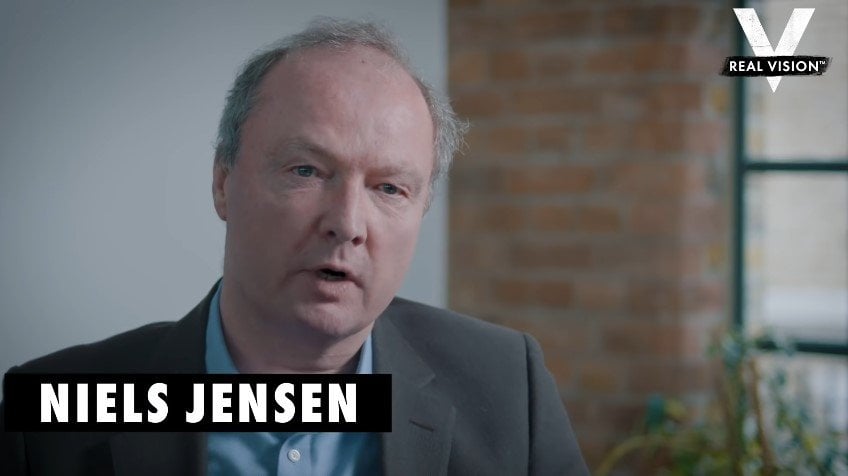Niels Jenson, the CIO of Absolute Return Partners, outlines six mega-trends which he believes will devastate the performance of passive investing over the next decade. While the timing is difficult to predict, the trends are inevitabilities that will require significant tweaks to long term portfolio construction. Filmed April 19, 2018 in Twickenham, England.
The Mega-Trend Threats To Passive Investing With Niels Jenson – Expert View – Real Vision™
Q3 hedge fund letters, conference, scoops etc
Transcript
I'm a Danish national. Came home to my wife one spring day in 1986. I said to her would you like to move to London. I've been offered a very interesting job. That's now 31 years ago.
So we have now Spain's we are for intents and purposes British nationals but obviously we're strong Danish roots. I have worked mostly for American investment banks. I worked for Goldman Sachs for many years.
I ended up at Lehman Brothers heading up the private wealth management division in Europe.
Then in 2002 I decide to start my own business. We're now into 17 18 years. That business was mostly in multi-family office business. But gradually especially after the financial crisis in 2008 we have increasingly become institutional. And today the biggest client base for our business today is the UK corporate pension fund base. Game. Could unfold in a number of different ways.
Me back off before we get to the end game. Let me explain why I think the world has changed quite dramatically in recent years.
The typical investor today doesn't really care about the long term. For most investors long term means. Next Monday morning and not next Yale or the year after. And therefore some of the longer term structural trends that I have focused on in my book are being not only ignored and neglected by investors. And that's actually an opportune asset for those investors who are prepacked to dig a little bit Deeba and Popat just talk to that portfolio according to. What is going to unfold over the next 10 20 30 years. The endgame can unfold in a number of different ways. If you go back to one of the one of the six structured megatrends that I discussed in the book is what I call the end of the day at supercharging the last that supercycle ended in the 1940s late 30s early 40s and. That basically reset the clock debt to GDP has been rising constantly since 1946 and I'm arguing in my book that we are now approaching the end of the Cantet super saga.
If you go back in history to 3 400 years you can find a number of that super. It's not a an unknown phenomenon. We typically build up debts. Something happens. Everything collapses and we start all over again. And that's precisely what we are. Now we are at the tail end of the current debt. That combined with a number of other factors will potentially end up in what I call the perfect storm a prolonged period of.
Low GDP growth low returns and equities. And for that reason investors need to think fundamentally differently in terms of how they started their portfolios for many years to come. The way I structure portfolios. First of all it is quite different from the way most people do it. Most people think of portfolio construction as how much to allocate to two equities Hamas to allocate to bonds. They think of asset classes when they talk to their portfolios. I don't think of asset classes I think of risk buckets. I operate with full risk buckets. Beats of risk and if a risk.






